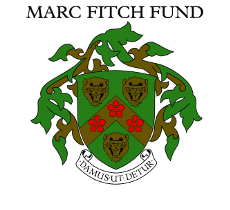The browser will either open the file, download it, or display a dialog.
Welcome to the fourth “special issue” of Nineteenth-Century Art Worldwide. Special issues focus on a single theme and are coordinated by guest editors. Our first special issue centered on the impact of Darwin and evolutionary theory on nineteenth-century art. The second considered the importance of Siegfried Bing and his gallery La Maison de l'Art Nouveau for the development of late nineteenth-century fine and decorative arts in France and abroad. The third special issue was dedicated to Patricia M. Mainardi, the scholar and teacher who has made such significant contributions to our field, and who founded the Association of Historians of Nineteenth-Century Art.
We are delighted to devote the fourth special issue to a set of essays titled Change/Continuity: Writing about Art in Britain Before and After 1900. This project had its origins in a five-paper session that Martina Droth (Yale Center for British Art) and Peter Trippi (Fine Art Connoisseur Magazine) co-convened at the 2008 conference of the College Art Association (CAA) in Dallas. The positive reception that this session garnered bolstered their belief that there is much more to say about the ongoing difficulty of bridging the transition from the “Victorian” era to early 20th-century “Modernism” in histories of British art.
Although the study of British art before and after 1900 can still be said to constitute two more or less distinct fields, art historians have become increasingly aware of the artificiality of this divide and the problems of periodization. Over the past decade, a number of studies, notably Julie Codell’s The Victorian Artist (Cambridge: Cambridge University Press, 2003) and Jessica R. Feldman’s Victorian Modernism (Cambridge: Cambridge University Press, 2002), have sought to present a more cohesive approach to the period, and revisionist studies of individual artists, such as Frederic Leighton and Lawrence Alma-Tadema, have reclaimed “Modernist” concerns for art habitually labeled “Victorian.”
Much of this recent research has focused on identifying antecedents and continuities across the earlier and later periods. Change/Continuity: Writing about Art in Britain Before and After 1900 seeks to build upon this work by investigating the continuities, and their absence, through various forms of art writing. Presented here, therefore, are eleven original essays, which encompass the five papers originally delivered in Dallas, plus half a dozen more solicited by Droth and Trippi in order to broaden the project’s scope. These essayists live in Britain, Denmark, and the United States.
We sincerely thank these eleven contributors, Martina Droth and Peter Trippi for their leadership, and—as usual—our copyeditor Robert Alvin Adler and web developer Allan McLeod for their crucial roles in producing this issue. We are particularly grateful to The Marc Fitch Fund (http://www.marcfitchfund.org.uk) for its generous financial support of this issue. The Samuel H. Kress Foundation also deserves applause for underwriting some overseas travel expenses related to the Dallas session in 2008.
To those of you who are organizing symposia or CAA sessions, please remember Nineteenth-Century Art Worldwide as a possible publishing venue. All too often, scholarly gatherings that blaze new trails have little resonance beyond the group of people who attend them. Few symposia get published in their entirety because publishers—both commercial and academic—have become ever more reluctant to produce collections of essays. One or two symposium papers given may appear in separate journals, yet the impact of the symposium as a whole is lost.
We feel that the digital format of Nineteenth-Century Art Worldwide is ideally suited to publicize such sessions and to preserve them for posterity. If you have a proceedings or set of papers that you would like to propose, please contact Petra Chu at chupetra[at]19thc-artworldwide.org.
Thank you again to everyone who helped make this special issue a reality.
Petra ten-Doesschate Chu
Managing Editor
Isabel L. Taube
Executive Editor
Gabriel P. Weisberg
Reviews Editor



